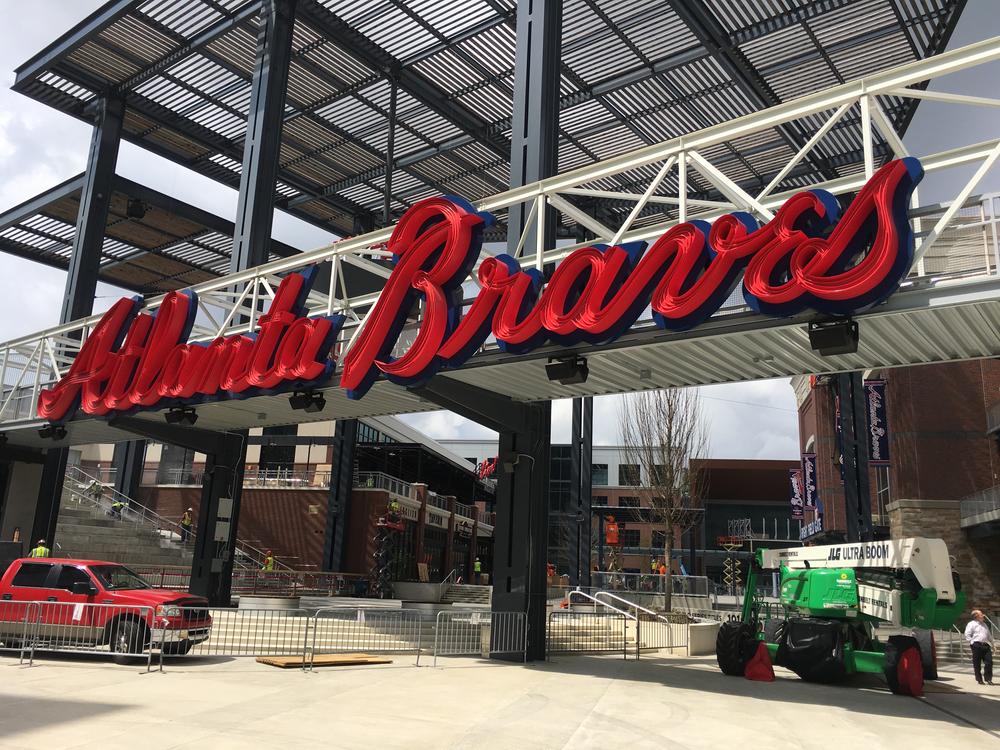Section Branding
Header Content
SunTrust Park Business Model A 'Triple Play' For Fans
Primary Content
The Atlanta Braves are saying there’s more to their new stadium than hot dogs and beer.
The team hopes a 50-acre development surrounding SunTrust Park will keep fans engaged and keep them coming back year-round.
When fans arrive on Opening Day, they’ll walk through a 60-acre complex of shops, dining and apartments before they set foot in the stadium.
The Braves organization is spending half a billion dollars on a mixed-use development it’s calling “The Battery.”
It’s part of a growing trend - teams create an “experience” for fans, fans come earlier and stay later, and hopefully the team makes more money.
But do businesses outside that development benefit?
Malaika Rivers is Executive Director of the Cumberland Community Improvement District
It’s a six-and-a-half square mile district around the park that taxes commercial businesses to invest in transportation infrastructure.
Rivers says what’s good for the Braves is also good for the surrounding businesses.
“Since the Braves announced back in 2013 to now, our property values have increased 15 percent – that’s adding $675 million in property value to this district,” Rivers said. “It really is phenomenal.”
Some experts say that’s not enough to justify public spending – more than $400 million in Cobb County.
Roger Noll is an economist at Stanford. He studies the impact new sports stadiums have on the communities around them.
He says most existing stadiums stop fans from engaging with anything outside the game.
He calls it a "reverse donut" model, with a stadium in the middle, then surrounding that is a sea of parking lots.
“And if you want to punctuate it even more, you can add a freeway that goes all around it, which many stadiums have,” Noll adds.
For this new model to work, Noll says it would take a much larger development than what the Braves are building.
In California, the Los Angeles Rams are building a multi-billion-dollar stadium project.
The mixed-use development there will occupy nearly 300 acres - a space three times larger than Disneyland.
According to Noll, even that might not make a difference.
The best-case scenario is that the Braves’ development makes enough money year-round to help pay off the $18 million a year in debt servicing.
“Worst case, it sort of fades away, and becomes an eyesore and not a financial success,” Noll said. “And essentially the county is left absorbing the entire cost.”
Rivers of the Improvement District isn’t worried.
The Cumberland community has been growing steadily for the past 30 years.
She sees the Braves’ investment as an added bonus to existing improvements that have been in the works for close to a decade.
“The timing is just that they’re coming out of the ground because of – fortunately – the opening of SunTrust Park and The Battery,” Rivers said.
The Braves have laid the groundwork for a new model of how sports stadiums interact with the communities around them.
With taxpayers on the hook, both the team and the community are hoping they don’t strike out.


